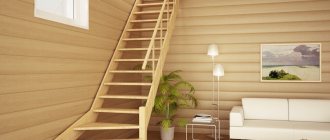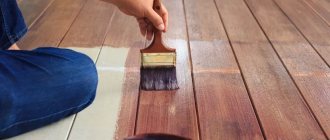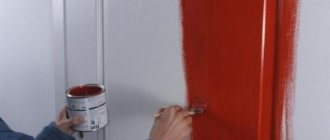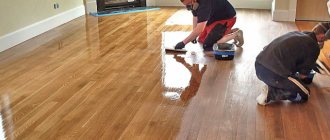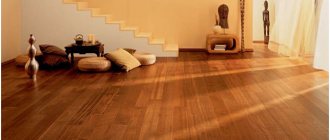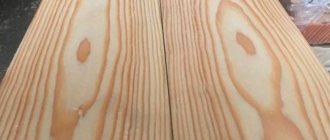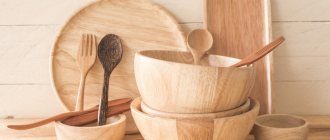Nitro-based polishes
When choosing a material for covering stairs, you should choose a shade that is as close as possible to the natural color. Having chosen a color, you need to decide on the type of paint, remembering that pigmented mixtures hide defects well and can be applied to putty areas. However, they hide the natural appearance of the wood.
How to paint a wooden staircase outdoors
Wood is often used to decorate entrance stairs and porches. The material needs protection from weather influences and pests. There are a number of products available for this purpose that will extend the life of the product and improve its appearance.
Since outdoor stairs are subject to more severe loads, you need to use suitable varnishes and paints to paint them. Of these materials, the best option would be to treat the surface with natural drying oil paint. Also, finishing can be done with alcohol-based, alkyd or polyurethane-based varnishes. Enamels and paints based on artificial drying oil are not suitable for outdoor work because they are afraid of dampness.
Painting a wooden staircase outdoors
Non-varnish coatings
To protect a wooden porch, it is not necessary to use paints or varnishes. Modern manufacturers offer a wide range of specialized non-varnish materials, for example, special wax gels and oil impregnations. Thanks to these materials, you can treat wood once, and this will be enough for 5-10 years. The disadvantage of applying non-varnish material is the high labor intensity of the work. To paint, for example, a porch with alkyd varnish, 2-3 hours is enough, but to treat it with gel or wax mastic will require long-term mechanical polishing.
After applying the non-varnish material, you will get a fairly durable and attractive glossy or matte finish. If the porch is made of wood that has a beautiful texture, then it is better not to paint it, it is advisable to use impregnation or gel.
Oil impregnations are a very popular material for treating wood structures located outdoors. The simplest option is to apply natural drying oil to the surface of the wood. Drying oil hardens in 7-10 days to a hard coating, and it dries touch-free in 2-3 days. Many manufacturers produce oil impregnations; if you follow all the application recommendations indicated on the packaging, you will be guaranteed reliable protection of the wood from adverse effects. Oil impregnations perfectly highlight the natural attractiveness of a wooden porch located on the street and make the wood very beautiful.
How to treat wood before painting
Proper treatment of wood before painting is an important point in extending the life of the product. Preparation for future painting is necessary before assembling the structure. This list includes the following treatments:
- Adjusting the surface of a board or timber using a plane. This will remove unnecessary bumps and bulges. To obtain a perfectly smooth surface, it is better to use a special machine.
Sanding the surface of a board using a plane
Sanding a wooden surface
If you choose a clear varnish for painting, then instead of a primer you should cover the wooden product with stain.
What paints and varnishes should I use to treat pine?
If the staircase is made of pine or other coniferous trees, before painting it, the material should be treated with preparations that will degrease the resin. Otherwise, the surface of the structure will be stained, especially if it is covered with matte or light varnish. This is due to the uneven absorption of paint by different areas of resinous pine wood.
Glass fencing
In modern designs, glass railings for stairs look very stylish, protruding as solid surfaces or in the form of separate vertical supports. Photos of such balusters are quite often found in examples of fashionable interiors.
Glass is usually attached to any base with hinges or inserted into special metal attachments. If a flat glass surface acts as a fence, then you can fix it in a groove carved into the wood - this is the simplest method of fastening, which you can do yourself.
For the manufacture of glass fencing, only triplex is used - this is multi-layered durable glass covered with a special film.
Despite the fact that glass is considered a fairly fragile material, triplex is an ideal option for fencing due to its resistance to damage.
Thus, armed with information and advice on their installation, you can easily carry out high-quality installation without the involvement of expensive specialists.
Of course, in interiors you always want to achieve a certain style and taste, so the choice falls on various turned wooden products, forged or glass. But if you need balusters, say, for an attic staircase, then making balusters is as easy as shelling pears - buy a regular rail for this.
Choosing the color of steps and balusters
When painting wooden stairs, the color of the steps and balusters is selected to match the tone of the entire structure, which depends on the owner’s imagination or the features of the interior. If you want to highlight the beauty and characteristics of natural wood, it makes sense to use stain or clear varnish for painting.
In order to hide minor defects or fit the staircase into the overall interior, paints, varnishes and enamels of suitable colors are used. When treating a structure with varnish, experts advise choosing a matte version, which will hide minor imperfections in the structure without spoiling the overall impression.
Steps painted with matte varnish
Many people have recently given preference to patina when painting balusters. This option will allow you to choose any shade, while balusters painted in light or gray tones seem airy, white and turquoise options look very expressive, and gilded or bronze patination adds luxury to any interior.
Bronze patination of wood
When painting steps, you should follow the same rules as when processing the entire structure. It should be remembered that before starting to apply paint, the room and stairs must be clean to avoid dust or dirt getting under the paint, which can lead to stains and stains.
Since painting a staircase can take more than one day, the steps can be treated through one element. This will cause some inconvenience when walking, but will make it possible to use the stairs while painting.
Painting technology
Treating stairs with paints and varnishes is not difficult and anyone can do it. The main thing is to carry out pre-treatment correctly and fully comply with the technological process.
After the preliminary processing discussed above, you can begin the main work. A wide soft brush or spray bottle is suitable as a working tool.
Paint brushes
Varnish or paint is applied to a wooden staircase in 3 layers. Moreover, each subsequent treatment is carried out after the previous coating has completely dried.
- The first layer is applied along the wood fibers in the longitudinal direction.
- The final layer goes on like the first.
The second treatment is carried out perpendicular to the location of the wood fibers.
If the stairs are coated with opaque paint, its surface must be cleaned and puttied. After the putty has dried, the product is sanded. It is advisable to perform this operation in two stages, with a break of several days between them. This will allow defects that were not previously noticed to appear.
Then, the surface is primed and after the structure has dried, a final layer of paint is applied to it.
Rainbow spiral staircase to the second floor
Multi-colored staircase to the second floor
What is better to paint a wooden staircase to the second floor inside the house, on the street, than to treat the wood before painting, what paint, varnish to coat a pine staircase, the color of the steps, balusters
Source: lestnicypro.ru
Comments: 7
Tatiana
- Clear the work area - remove anything unnecessary from the stairs, such as carpets or runners. Cover all surfaces that you do not plan to paint with newspaper or cloth, and secure them where necessary with masking tape.
- If nails or track holders protrude from the stairs, hammer them 2-3 mm into the wooden surface with a hammer and cover the top with wood putty to ensure a smooth surface.
- If you are painting over old varnish, lightly sand the wood surfaces with fine sandpaper to help the new paint adhere better. If the old coating is in poor condition, wash it off with a special paint removal solution.
- Vacuum the stairs and railings and then wipe with a damp cloth to remove all dust and dirt. Wipe dry and allow time to dry thoroughly.
- It's time to prime! A high-quality primer will ensure good adhesion of the paint to the coating and its stability. Use a professional primer on all exposed and filled wood surfaces.
- Once the primer is completely dry, you can begin painting. Start painting from the top of the stairs and try to thoroughly paint the wood grain. After 6-8 hours the next layer can be applied.
- If you are painting the stairs and railings different colors, paint them at different times and allow plenty of time to dry. Use masking tape to ensure the boundaries between colors are clear and even.
- When the paint has dried, you can lay down the carpets and runners again, or you can leave the stairs as they are - in a minimalist style and a new color.
- These are general recommendations, and in order to decide in your case, you need to know: you have a new staircase or a staircase that requires updating, whether you need stripping, putty, sanding and in what volumes, the requirement for surface coverage, the frequency of using the stairs. Preferably a photo.
- Likes: 1
- Save
Bureau9
Check out Belinka's products. https://www.belinka.ru/ Partners - adequate in work and consultation. Call them and they will give you comprehensive information. Good luck!
- Like
- Save
How to paint a pine staircase: choice of paint materials and technology
How and with what to paint a pine staircase? Perhaps the question will make the reader smile: is it worth racking your brains over such a simple operation? However, practice shows that the service life and quality of the appearance of the coating are directly proportional to the time spent on surface preparation and its application. Let's try to do the job according to all the rules.
The photo shows an interfloor staircase. Material – pine.
Related discussions
Need advice on hallway layout
Need advice on finishing the corridor and stairs to the 2nd floor
Need advice on the color of porcelain tiles for the stairs
loba_boba
The staircase is completely new, recently installed. Pine, two-march classic.
I would like the result to be something like the one in the photo below. And the main question is about the painting sequence. First the steps are dark, then the risers are white? or vice versa?
- Like
- Save
Problems
Is wood any different from, say, metal in terms of applying paint and varnish coatings? Does pine stand out in any way compared to other types of wood?
- Unlike metal, wood is hygroscopic. Its surface absorbs paints and solvents just as well as water.
- Moistening or applying a layer of paint means the pile is raised: the wood fibers change their orientation, and the surface becomes rough.
- The wood texture itself is quite beautiful and can be used as a decorative element. Of course, in this case the final coating should be transparent or translucent.
- Pine is distinguished by a large amount of resin that impregnates the material. Not all paint will adhere to the tarred area; what is equally important is that the resin content is uneven. As a result, the coating itself may become uneven.
Let us clarify: resinity is a property not only of pine. All conifers have it to one degree or another.
Basic moments
Let's discuss a few questions that inevitably arise when building a wooden staircase with your own hands.
Choice of coverage
Is a surface layer necessary? Why are various oil- and wax-based impregnations worse than varnish or enamel? Can't you just cover the steps, bowstrings, balusters and handrails with stain?
Stain is definitely not enough. Any coating must create a barrier to moisture: fluctuations in atmospheric humidity, inevitable throughout the year, will quickly cause relatively loose pine to crack and warp. In addition, do not forget about rotting and woodworms.
Impregnation is quite capable of protecting the tree from most adverse factors. However, one trap awaits us here: oil and wax will not protect the surface of the steps from mechanical wear. Walking along the soaked stairs only barefoot or in soft slippers... are you sure that this is comfortable?
Summarize
You can give the stairs a tone or leave the wood in its natural form, but a finishing layer of varnish must be applied, as it will protect the wood from dust, dirt and high humidity.
I don’t recommend painting the stairs yourself, it will result in imaginary savings. I've seen dozens of stairs painted on my own and only one staircase (this in 7 years) was painted to a strong 4 grade.
The most practical choice would be a “tone + varnish” finish.
The choice of colors and types of coatings is very large.
Choice of paint and varnish
How to paint a pine staircase? Or, if your choice is a varnish coating, what to varnish it with?
It is worth separating the working surface of the steps and all other elements of the staircase: they have completely different modes of operation. The steps are subject to severe wear and tear; In addition, pine, as we remember, is a species with low wood density. Stilettos or hard heels may well leave marks on it if the strength of the protective layer is low.
On the other hand, handrails and accessories for stairs (bowstrings, balusters) and the back side of the steps are practically not exposed to loads. Any coating will serve mostly decorative functions - of course, in addition to protection from rotting and moisture.
Hence the choice of materials:
- For the working surface of the steps, alkyd-based floor enamels are used - domestic PF-266 and imported analogues. Brand preferences are deeply subjective, so we will not name specific names in order to avoid accusations of hidden advertising.
- The best varnish for pine stairs (more precisely, for the surface of the steps) is polyurethane parquet . Its price is quite high; but it forms an extremely durable and wear-resistant surface.
Advice: it is better to choose matte or semi-matte varnish rather than glossy. It shows less visible signs of wear, which will inevitably appear in the center of the steps, even after a long time.
Installation of metal options
Fastening metal balusters is not difficult, because... They are sold ready-made with the necessary fasteners. As for forged products, they are attached directly with the base to the steps, and the top to the railing.
If you have electric welding, this will make the task of installing metal structures to the steps of the stairs easier. If there is none, then manual installation is quite simple:
- Using a construction pencil and a ruler, mark the location where the balusters will be fixed;
- Place the stand into which the end of the rack will be inserted against the markings, and make the required number of holes of the required diameter in the steps;
- Use dowels and screws to secure the bases;
- Install the balusters into the bases and secure the handrails with self-tapping screws on top.
Technology
So, we have decided how to cover a pine staircase. You can start working. Where to begin?
Resin
One of the typical problems of pine has already been mentioned: resin. The resin content of the fibers and, most importantly, the resin pockets. How to get rid of this scourge?
Acetone or turpentine can help. Both solvents are excellent at removing traces of resin and dissolving resin accumulations in pockets. For cleaning use ordinary rags.
Turpentine dissolves all natural resins.
putty
The optimal choice in our case is acrylic wood putty. Irregularities, cavities from knots and resin will have to be puttied 2-3 times with intermediate sanding: the putty shrinks when it dries.
If painting is to be done, the color of the putty does not matter; but when varnishing it is better to match it to the tone of the wood. The exception is the case when the final coating is dark tinted varnish: white patches on a light background under its layer will not be noticeable.
Grinding
A sander can be used on the planes, but the balusters, the surface of the steps between them and the handrails will have to be sanded by hand. For sanding, you will have to stock up on several types of sandpaper with different grits: trying to jump from 60 to 120 grit will only be a waste of time. You shouldn’t treat the stairs with zero polish: save it for interlayer sanding of the paintwork.
A sander will speed up the processing of flat surfaces.
Painting
Painting a pine staircase is done with a brush: do not spray alkyd enamel or viscous varnish with a spray gun; the surface of the staircase has too complex a shape for a roller. Painting is carried out in at least three layers; polyurethane varnish can be applied on steps and in 6-7 layers: it performs not only decorative functions, but also provides reliable protection against mechanical damage.
After applying the first layer and drying it completely (regardless of whether we are talking about enamel or varnish), the entire surface is sanded with a zero polish. Enamel or varnish will inevitably raise the pile, but leaving the surface rough is not in our interests. Ideally, all layers except the final one are sanded.
Please note: before painting and varnish work you will have to do a general cleaning of the room. Dust can disfigure any coating.
Source: sdelai-lestnicu.ru
Types of paints and varnishes
To give the staircase a finished look, several types of paint and varnish coatings are used. These are varnishes, impregnations and paints themselves. The former emphasize the structure of the wood (tinting) or fix the result (transparent), the latter also emphasize the beauty of the wood pattern, but require additional fixation with a transparent varnish. The paints allow you to paint the stairs as you please.
Coloring is done not only for aesthetic purposes. On the floor, tongue and groove pine boards are most often used. Despite its strength, unopened wood wears out 5 times faster. This is due to the fact that dust and grains of sand become clogged in the pores, which over time destroy the structure of the floorboards. By painting a staircase made of pine or any other wood with varnish or paint yourself, you extend its service life.
stain
Stain is one of the cheapest compositions for covering stairs. Impregnation comes in different colors. It is designed to protect the wood and give it some shade. But it is better not to cover the stairs only with stain - after drying, you should use varnish.
It is customary to use a primer before applying varnish or paint, as it improves adhesion to the wood and makes the wood structure more uniform. If you tint the primer a little, you can emphasize the characteristic wood grain. The primer also contains substances that prevent the wood from rotting.
Clear/tinted wood varnish
Varnish is used to cover steps, balusters and railings. The colorless composition does not hide the wood texture. It is very important that the sanding of all elements of the staircase is carried out at the highest level. Transparent varnishes come in several types:
- Latex. Non-toxic material, safe for humans and animals. When applied to wood, it forms a thin, durable, water-resistant layer. It has antiseptic properties - protects wood from mold and rot. Can be used both indoors and outdoors.
- Water-based or acrylate. It has no unpleasant odor, is non-toxic, forms a fairly durable coating that is resistant to mechanical damage, and prevents the aging of wood.
- On synthetic resins. Such varnishes dry quickly, are resistant to aggressive environments (alkalies, acids), and are used only for interior work. Do not use synthetic resin varnishes to paint steps. They are suitable for balusters and railings.
- Yacht. There are different types, depending on the base - alkyd and its varieties (urethane-alkyd, alkyd-urethane) and acrylate. It is toxic, so when using it inside a living space, wear a respirator, otherwise the probability of poisoning is 99%.
Advice! Use clear yacht varnish to paint stairs only as a last resort. It is poisonous even after drying.
Tinting varnishes include oil-based compositions. With their help you can change the color of wood from pale yellow to rich brown. When choosing, you need to look at what percentage of oil is included in the composition. To paint the steps of the stairs, this parameter must be at least 65%. In this case, you will get a durable, wear-resistant coating. If the oil varnish contains only 50% oil or less, there can be no talk of any strength. This composition is suitable only for balusters and railings.
